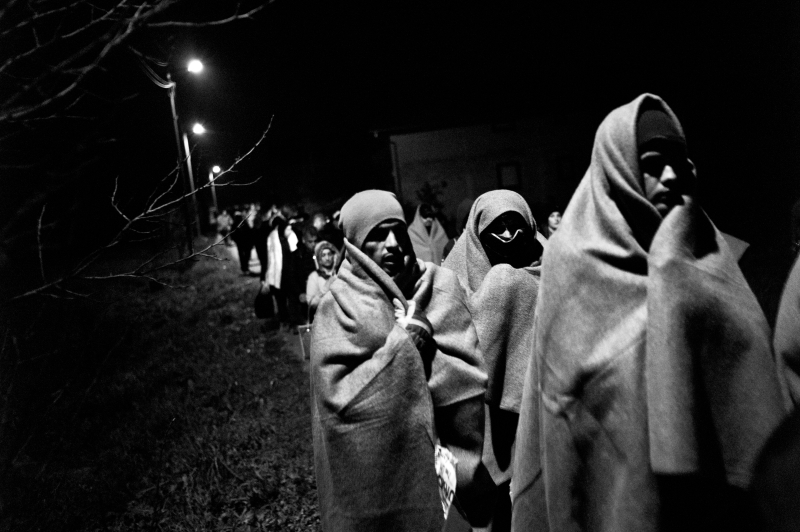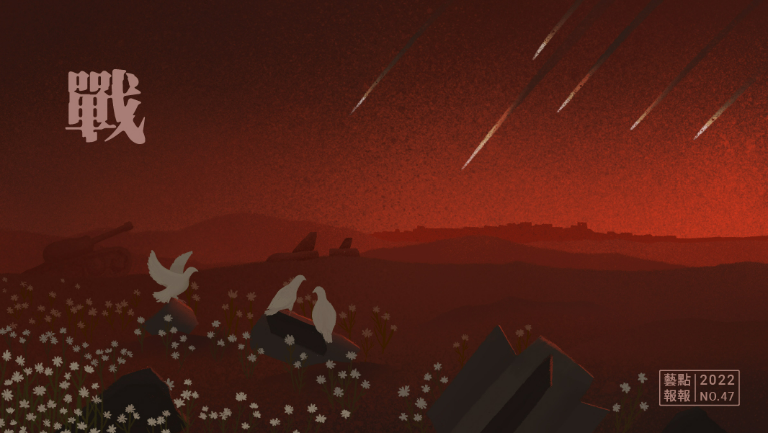Looking back on 2021, it is hard to ignore refugee-related news. The global outbreak of the COVID-19 pandemic has made the situation of refugees at the borders and in refugee camps even more difficult. To raise international awareness with regard to refugee children, the UK art collective Good Chance Theatre created The Walk, the journey of a young refugee girl called Little Amal, and toured across eight countries. The end of the year saw displaced victims of armed conflict journey to the borders of Belarus and Poland, as well as a new wave of refugees and political crises in Europe triggered by the migrant shipwreck in the English Channel. The Nobel Prize for Literature in 2021 was awarded to the Tanzanian novelist Abdulrazak Gurnah—a refugee himself—for his "uncompromising and compassionate penetration of the effects of colonialism and the fate of the refugee in the gulf between cultures and continents".
The suffering of refugees has not ceased and the refugee issue is a challenge the entire world is grappling with. In contrast, Taiwan, because of its geographical and cultural ties, has hardly felt the impact. However, from the NCAF grantee projects in recent years, we can see that many artists and groups are concerned about this issue, either through research and field visits, or through participation in art exhibitions and international exchanges. They contemplate and present their empathy towards the situation of refugees/immigrants, as well as lay bare the points of connection between Taiwan and the world.
Personal Observation, Leaving Behind a Record of Those Stories of Suffering
Methok Yin, who has long been dedicated to and concerned with the issue of Tibet, used her observations on the exiled Tibetans in Dharamshala, northern India gathered through onsite interviews to complete her non-fiction novel project The Journey of the Soul - Ten Positions of Exile. She used individual stories to build up a collective memory, painting a picture of the current situation of Tibetans in exile through the combination of different writing perspectives. Kang-Yi Chang's documentary Homeward uses video recording to present the sorrow of exiled Tibetans who cannot return to their homeland. Both of them try to bring the issue of Tibet to the attention of the general public in Taiwan, as to arouse their care and understanding.
From 2016 to 2017, photographer Chien-Chi Chang set off from Syria to visit refugee camps in Turkey. This journey led him to record and observe the refugee issues caused by the Syrian civil war, as well as Europe's refugee crisis and its aftermath. He thus completed Azma, a work in the The War That Never Was series. The film focuses on a Syrian woman, a refugee and a mother living in Austria, and integrates the photographer's personal life experience with his outlook on this issue.
The photographer Simon Chang, who is based in Eastern Europe, continued his documentation of refugees at the EU border in 2015 and traveled to Iraq's Kurdistan Region in 2018 for the Fleeing from the Dark Side of the Moon photography & video project. By collecting the stories of local refugee camps and patients of the Hawler Psychiatric Hospital, he sought to document the impact on the lives and mental states of people who have lost their homes or families to years of war and conflict. In 2021, the Refugees in the Ivory Tower international exchange project created an online gallery to let the ivory tower gradually disappear by giving viewers the opportunity to access the words and images of the stories firsthand, enabling them to stand in the shoes of others.
Transformation Into Exhibitions & Performances on Refugee Issues
Style Lab performed AISHA in 2017, when the Syrian civil war was entering its seventh year and still raging on. The work is based on letters from refugees and inspired on playwright Tai-Hsin Chang's visit to Germany, with the intention of producing a play that Taiwanese people can relate to on a personal level. The Drift Project and experience exhibition by Performosa Theatre at the end of 2019 were a continuation of the investigation and discussion of Asian perspectives opened by the series of lectures focusing on refugees and migrants and the guided reading of Kassandra oder die Welt als Ende der Vorstellung. The exhibition was developed into 11 differently themed scenarios and presented in ship containers, hoping to deepen Taiwanese people's understanding on migration.
Under the Horizon by Huang Yi Studio+ set off for the Netherlands in 2018. In this project, rehearsals and the premiere took place in the Netherlands, and the work then embarked on a world tour. Choreographer Yi Huang saw the suffering of wandering migrants during his tour of Europe and incorporated this shock into the creation of Under the Horizon. The performance combines digital video technology, singing and recitation, and physical dance movements, Art critic Hsiu-Chuan Tu described it by saying "it magnifies the inner experiences and longing of people, and portrays the innermost loneliness, collective trauma, and perplexity".
In addition, Students for a Free Tibet - Taiwan organized the 2019-2020 Taiwan-India Co-Creation Project: Phase II Exhibition Beyond Territory at FreeS Art Space in 2020. Beginning with a study of border crossing and stateless migrants, the exhibition explored how contemporary art shows concern for and addresses the intricacies of political and economic contestation of borders, as well as the actions it takes. The exhibition also featured works by artists, documentary directors, and journalists who have drifted on the plank of politics.
Taiwan's Own Refugee Track Record and Actions
Finally, this section revisits Taiwan's own refugee incidents. Since Director Asio Liu filmed a documentary on the Penghu refugee camp before its demolition in 2003, he has been developing the Penghu Vietnamese Refugee Camp in Taiwan Strait trilogy (Place of Exception, Chin Liu Tao, and Refugee Boats) across nine years. He documented the history of Vietnamese refugees who have been almost forgotten by Taiwan and the world since the mid-1980s, and traveled across many countries to film and interview refugee boat migrants who stayed in the refugee camps in Penghu. In the future, he also intends to continue to preserve this chapter in history through publications and virtual museums. He chiefly considers how to spread awareness on this refugee history in Taiwan and the world.
It is difficult to imagine the extent of the difficulties and even the dangers that the artist has had to go through in order to carry out the aforementioned art projects. It is also through artworks that we are given an outlet for understanding, contemplating, and expressing the human condition. At a time when the issue of refugees has gone global, the world is forced to share the suffering of refugees until they can safely return home or find a place to settle down.
Further readings and related websites:
- Piecing Together the Lonely Years of Tibetans in Exile: Tibetan Refugee Self-Help Center in Darjeeling Forgotten by the World, Methok Yin
https://global.udn.com/global_vision/story/8664/5037117 - Drifting on the Roof of the World—Refugee Descendants Are Still Stateless Refugees, PTS+ Viewpoint
https://www.youtube.com/watch?v=NHsZCjVKx7o - A Foreigner Forever in a Foreign Land: A Brief Discussion of Chien-Chi Chang's Creative Journey, Fountain
https://www.fountain.org.tw/article/chang-chien-chi - After Appearing, Evidence of Their Existence—Simon Chang's Fleeing from the Dark Side of the Moon, NCAF e-Magazine
https://reurl.cc/RbZgWg - The Miniature Imagination of Transnational Movement—the Drift Project in the Shipping Container, Performing Arts Review Taiwan
https://pareviews.ncafroc.org.tw/?p=57228 - Where Death and Life Meet: Under the Horizon (original version), Performing Arts Review Taiwan
https://pareviews.ncafroc.org.tw/?p=31892 - Beyond Territory: From Border to Border—Frontier Writing from the Perspective of an Island
https://artouch.com/views/exhibition/content-13386.html - Director Kek Huat Lau of Absent Without Leave in Conversation with Director Asio Liu of Palce of Exception, Fun Screen
http://www.funscreen.com.tw/headline.asp?H_No=640
*Translator: Linguitronics










_1693364704555.jpg)


